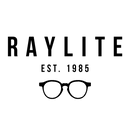Why Is My Child's Myopia Increasing Rapidly? Exploring Causes and Solutions

Introduction
As parents, it's natural to be concerned about our children's health, including their vision. In recent years, many have noticed a significant increase in myopia, or nearsightedness. But why is this happening, and what can we do about it? In this article, we'll delve into the factors contributing to the rise in childhood myopia and explore potential solutions to address this concerning trend.
Myopia, once considered a common vision problem, has now become a growing epidemic among children worldwide. It was predicted that nearly 50% of the world population will become myopic by 2050, with 10% of the world having high myopia. (1)
What Exactly is Myopia?
Myopia, or nearsightedness, is a refractive error where distant objects appear blurred while close objects remain clear. It occurs when the eyeball is too long or the cornea is too curved, causing light rays to focus in front of the retina instead of directly on it. A prescription of -0.50 Diopters or “50 degrees” or more would constitute as being myopic.
Unveiling the Risk Factors
The development of myopia is influenced by a blend of genetic, environmental, and lifestyle elements. Having parents with myopia significantly raises the chances of children developing the condition, when both parents are myopic, their children have about a 50% chance of inheriting myopia from both parents. Even having one myopic parent increases the likelihood by approximately 33%, while children without myopic parents have a lower risk at 25%. (2)
Asians are also more likely to develop myopia compared to other ethnicities. With Asia having the highest prevalence globally. In Singapore, the prevalence of myopia stands at a remarkable 79.3%, with severe myopia affecting 13.1% of the population. Notably, the rates among Chinese individuals are even higher, reaching 82.2%, compared to Indians at 68.7% and Malays at 65.0%. (3)
Environmental factors also play a crucial role, such as insufficient outdoor time, excessive near work, and exposure to low-light environments have shown strong correlations. Children who spend less time outdoors and engage in prolonged near activities like reading or screen usage strain their eyes, exacerbating myopia. Moreover, dimly lit environments can further aggravate the condition. Children with longer axial length (eyeball length) have a much higher risk of high rates myopic progression. (4)

Impact on Eye Health and Daily Life
Myopia typically initiates and advances during childhood and adolescence, but its progression may still persist into adulthood. The most rapid advancement of myopia often occurs between the ages of 6 and 15 (5) and may increase about an average of -0.75DS or more annually. (6) Individuals with severe myopia face heightened risks of developing severe vision-related complications such as retinal detachment, glaucoma, and myopic maculopathy. (7)
Strategies for Prevention and Management
Ethnicity and genetics are factors that we cannot change. Fortunately, there are still steps we can take to change the modifiable factors to slow down the progression of myopia. Lifestyle changes definitely have to be made in order to reduce the risk factors of myopia. However, in many cases nowadays, it is not enough.
Specialised spectacle lenses and contact lenses are some of the various treatment options available for managing myopia. Orthokeratology overnight lenses allow wearers to see clearly during the day and have been proven to be effective in halting any increase in myopia.(8)
The latest advances in technology have developed myopic defocus spectacle lenses such as the ZEISS MyoCare and Essilor Stellest lenses, which are also effective in controlling myopia and axial length growth. When paired with frequent check ups and guidance from your optometrist, myopia can be well managed.

Conclusion
As parents, you play a crucial role in safeguarding our children's vision and overall well-being. By understanding the factors contributing to the rise in childhood myopia and taking proactive steps to address them, we can help ensure a brighter future for our children's eyesight. Join us in the fight against myopia and prioritise your child's eye health today!
Special Event:
Join us on 1 & 2 June 2024 for an exciting family event at Raylite Orchard this June Holidays!
We'll have Expert Talks on Ortho-K & Myopia Management Lenses, Fun Activities & a Lucky Draw!
Learn more & sign up:
https://www.rayliteoptical.com.sg/products/myopiasummercamp2024
References
- Holden, B.A. et al. (2016) Global prevalence of myopia and high myopia and temporal trends from 2000 through 2050, Ophthalmology. U.S. National Library of Medicine.
- Morgan P. (2016) Is Myopia Control the Next Contact Lens Revolution? The Optician. Saw, S. M., Gazzard, G., Shih-Yen, E. C., Chua, W. H., & Koh, D. (2001). Myopia and associated pathological complications. PubMed Central.
- Meng, W. et al. (2011) Axial length of Myopia: A Review of Current Research, Ophthalmologica. Journal international d'ophtalmologie. International journal of ophthalmology. Zeitschrift fur Augenheilkunde. U.S. National Library of Medicine.
- COMET Group (2013) Myopia stabilization and associated factors among participants in the correction of Myopia Evaluation Trial (COMET), Investigative ophthalmology & visual science. U.S. National Library of Medicine.
- Wu, P. C., & Chuang, M. N. (2012). Update in myopia and treatment strategy of atropine use in myopia control. Taiwan Journal of Ophthalmology, 2(2), 55–66.
- Haarman, A.E.G. et al. (2020) The complications of myopia: A review and meta-analysis, Investigative ophthalmology & visual science. U.S. National Library of Medicine.
- Lam, C. S. Y., & Goh, W. S. (2017). The incidence of refractive errors among school children in Hong Kong and its relationship with the optical components. Investigative Ophthalmology & Visual Science, 58(3), 1206–1215.



Leave a comment